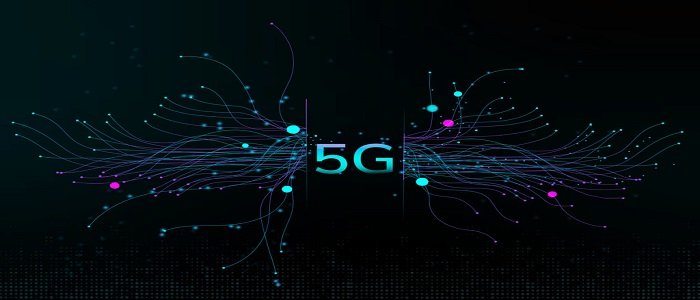With the fast progression of technology, the advent of the 5G network has brought around a worldview move in our connectivity and interaction with the world. The introduction of 5G has the potential to revolutionize different businesses, extending from healthcare and transportation to manufacturing and beyond, owing to its exceptional speed and minimal latency. However, amid this advanced transformation, we must stand up to the cybersecurity risks and challenges accompanying the implementation of 5G networks. This blog will explore the importance of protecting the 5G network from cybersecurity threats and delve into the opportunities that arise in the realm of 5G security.
Understanding 5G Network
The foundation of 5G networks lies in their ability to leverage higher frequency bands, specifically in the millimeter wave spectrum, which needed to be more utilized. These higher frequencies enable the transmission of large amounts of data at incredibly fast speeds. By harnessing advanced antenna systems, such as massive MIMO (Multiple-Input Multiple-Output), 5G networks can efficiently handle the increasing demands for connectivity.

Low latency stands out as one of the primary benefits offered by 5G, as it significantly reduces the time it takes for data to travel from its source to the intended destination. 5G will allow for near-real-time communication with much lower latency compared to previous generations. This is particularly crucial for applications that require instant responsiveness, such as remote surgeries, autonomous vehicles, and smart city infrastructure.
Another outstanding aspect of 5G is its capacity to support a huge number of IoT devices. As the Internet of Things proceeds to extend and embrace devices from smart appliances to industrial sensors, 5G will give the foundation to connect and manage these devices effectively. This scalability opens opportunities for advancement in various industries, such as healthcare, manufacturing, agriculture, and transportation.
The transformative applications made possible by 5G networks have the potential to revolutionize entire industries. For example, 5G enables remote surgeries in healthcare by providing surgeons with real-time haptic feedback and the ability to control robotic surgical systems remotely. In transportation, 5G facilitates the development of autonomous vehicles by enabling fast and reliable communication between vehicles, traffic infrastructure, and pedestrians. Smart cities leverage 5G to create interconnected systems that optimize resource utilization, enhance public safety, and improve residents’ overall quality of life.
Cybersecurity Risks Associated with 5G Network
While 5G promises unparalleled opportunities, it also introduces a new set of cybersecurity risks. The interconnectedness and increased reliance on 5G networks make them susceptible to various threats. Some of the prominent cybersecurity risks associated with 5G networks include:
Supply chain attacks: The complexity of 5G networks involving multiple vendors and suppliers increases the potential for supply chain attacks. Compromised components or malicious software inserted during the manufacturing process can pose significant threats to the integrity of the network.
Advanced persistent threats: 5G networks may face sophisticated and persistent cyber threats that can penetrate network defenses and remain undetected for extended periods. These advanced persistent threats (APTs) can infiltrate critical systems, steal sensitive data, or disrupt network operations.
Cloud-based vulnerabilities: As 5G networks rely heavily on cloud infrastructure for data storage and processing, vulnerabilities within cloud environments can expose the network to cyber threats. Breaches or unauthorized access to cloud resources can have severe implications for the security and privacy of 5G networks.
Insider threats: The increased complexity and scale of 5G networks also raise the risk of insider threats. Malicious or negligent insiders with privileged access to network resources can intentionally or inadvertently compromise network security, leading to data breaches or service disruptions.
Cybersecurity Opportunities of 5G Network
While the risks associated with 5G networks are evident, this technology also presents unique opportunities for enhancing cybersecurity. By leveraging the capabilities of 5G networks, we can mitigate risks and strengthen security measures.
Advanced encryption and authentication: 5G networks provide an opportunity to enhance encryption and authentication mechanisms. Organizations can leverage more vital encryption protocols and implement more robust authentication methods to ensure the confidentiality and integrity of data transmitted through 5G networks.
Behavioral analytics: The massive amount of data flowing through 5G networks can be harnessed for behavioral analytics. By analyzing user and device behavior patterns, organizations can detect anomalies and potential threats in real time, enabling them to take immediate action to mitigate risks.
Continuous monitoring and response: 5G networks facilitate continuous network traffic monitoring, allowing organizations to detect and respond to cyber threats in real-time. By implementing advanced security monitoring tools and Security Operations Centers (SOCs), organizations can proactively identify and neutralize potential threats before they cause significant damage.
Collaboration and information sharing: Protecting 5G networks requires collaboration among industry stakeholders, including network providers, government bodies, and cybersecurity experts. By sharing information on emerging threats, vulnerabilities, and best practices, these entities can collectively build a more vigorous defense against cyber threats, ensuring the security of 5G networks.
Automation and AI-driven security

With the increased processing power and low latency of 5G networks, organizations can use automation and artificial intelligence (AI) to improve their cybersecurity posture. AI-driven security frameworks can analyze tremendous amounts of data, recognize patterns, and identify potential dangers in real-time, enabling speedier and more precise threat detection and response.
Compliance and regulatory alignment: 5G networks provide an opportunity for organizations to align their cybersecurity practices with evolving compliance and regulatory frameworks. By proactively implementing security measures that adhere to industry standards and regulatory requirements, organizations can ensure they meet the necessary security standards for operating in a 5G-enabled environment.
Predicting the Future of 5G Cybersecurity Risks and Opportunities
As technology evolves, so do the associated cybersecurity risks and opportunities. In the coming years, we can expect the following trends in the realm of 5G cybersecurity:
1. The increasing sophistication of cyber threats: With the widespread adoption of 5G networks, cybercriminals will continue to adapt and develop more advanced techniques to exploit vulnerabilities. As the capabilities of 5G networks expand, so does the potential for sophisticated attacks. Threat actors may leverage artificial intelligence, machine learning, and automation to launch targeted and stealthy attacks. Organizations must remain vigilant and invest in robust cybersecurity measures that can proactively identify and mitigate emerging threats.
2. Collaboration for improved security: Recognizing the critical importance of 5G security, industry stakeholders will forge collaborations to enhance the overall security posture. Network providers, government bodies, and cybersecurity experts will work together to develop comprehensive security frameworks, share threat intelligence, and establish best practices. This collective approach will foster a more resilient and proactive defense against cyber threats, benefiting the entire ecosystem.
3. Integration of AI and machine learning: AI and machine learning technologies will be crucial in detecting and mitigating cyber threats in 5G networks. These technologies can analyze vast amounts of data, identify patterns, and respond to potential threats in real time. AI-driven security solutions will become increasingly prevalent, enabling organizations to automate threat detection, streamline incident response, and strengthen their overall security posture.
4. The emergence of 5G-specific vulnerabilities: As 5G systems become more prevalent, cybercriminals will progressively focus on identifying and exploiting specific vulnerabilities unique to 5G technology. These vulnerabilities may arise from the complex network architecture, software-defined networking components, or the management of network slices. Organizations must prioritize regular security assessments, vulnerability management, and timely software updates to address these emerging vulnerabilities effectively.
5. Heightened focus on privacy and data protection: The exponential data transmission and collection growth through 5G networks raises concerns about data privacy and protection. Organizations must prioritize robust data encryption, access controls, and compliance with privacy regulations to safeguard sensitive information. Privacy-enhancing technologies, such as secure enclaves and differential privacy may gain prominence to mitigate risks associated with data breaches and unauthorized access.
6. Securing the Internet of Things (IoT): The proliferation of IoT devices connected to 5G networks introduces new cybersecurity challenges. These devices’ diverse nature, potential vulnerabilities, and the sheer volume of connected devices make them attractive targets for cyber attacks. Organizations must implement stringent security measures, such as device authentication, secure firmware updates, and continuous monitoring, to protect IoT devices and prevent them from becoming entry points for network breaches.
7. Focus on end-to-end security: As 5G networks enable seamless connectivity across various devices and platforms, ensuring end-to-end security will be paramount. Organizations must secure not only the network infrastructure but also endpoints, cloud services, and applications that interact with the 5G network. This holistic approach to security will help mitigate risks and prevent unauthorized access or data compromise throughout the entire ecosystem.
8. Regulatory frameworks and compliance: Governments and regulatory bodies will play a crucial role in establishing and enforcing cybersecurity standards for 5G networks. Compliance with these standards will be essential for organizations operating in the 5G ecosystem. As new regulations emerge, organizations must adapt their cybersecurity practices to meet the evolving requirements and ensure adherence to privacy, data protection, and security guidelines.
Protecting the future of 5G networks requires a comprehensive approach to cybersecurity. While the advent of 5G brings unprecedented opportunities for innovation and connectivity, it also introduces new risks and challenges. By understanding the potential cybersecurity risks, leveraging the opportunities presented by 5G networks, and staying proactive in adopting robust security measures, we can safeguard our connected future’s integrity, confidentiality, and availability. As we progress, let us strive for a secure 5G landscape that fosters innovation and propels us toward a brighter, safer digital era.
